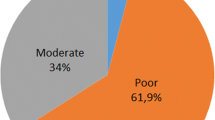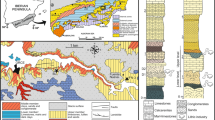Abstract
Ten thousands of bone fragments were recovered from the Ma’anshan Paleolithic site, of which 4358 pieces can be identified to skeletal elements or species. In this research, the bone assemblages are quantified based on elements of MNI, MNE, and MAU. Then bone surface modifications and skeletal element profiles of the bone assemblages are studied to understand shlepping behaviors and reveal the technique of disarticulating and defleshing the animals’ bodies, etc. Based on the analyses of bone assemblages and the comparative study with the ethnoarchaeological as well as experimental data, it is assumed that later hominids at the site made fuller use of the game animals than the earlier hominids. Incorporating the lines of evidence from chronological dating, paleoenvironment, and polished bone tools between the two cultural layers, here we propose three hypotheses suggesting that the changes of environment, the migrations of the hominids from the North, or the demographic pulses may cause such a behavioral difference. However, it is yet to be determined which hypothesis can better explain the changes.
Similar content being viewed by others
References
Zhang S S. A brief report of the tentative excavation in Ma’anshan Paleolithic site (in Chinese). Acta Anthropol Sin, 1988, 7: 64–73
Long F X. Analysis of bone fragments from Ma’anshan site, Guizhou (in Chinese). Acta Anthropol Sin, 1992, 11: 216–229
Zhang S S. The Paleolithic industries in Southwest China (in Chinese). In: Su B, ed. Su Bingqi and Modern Chinese Archaeology. Beijing: Science Press, 2001. 386–413
White T E. A method of calculating the dietary percentage of various food animals utilized by aboriginal peoples. Am Antiq, 1953, 18: 396–398
Brain C K. The Hunters or the Hunted? An Introduction to African Cave Taphonomy. Chicago: University of Chicago Press, 1981
Binford L R. Faunal Remains from Klasies River Mouth. New York: Academic Press, 1984
Zhang Y, Norton C J, Zhang S Q, et al. Applications of zooarchaeological Counting Units to Ma’anshan Faunal assemblage (in Chinese). Acta Anthropol Sin, 2008, 27: 79–90
Brain C K. The contribution of Namib Desert Hottentots to an understanding of autralopithecine bone accumulations. Scientific Papers of the Namib Desert Research Station, 1969, 37–53: 13–22
Shipman P. Application of scanning electron microscopy to taphonomic problems. In: Cantwell A M, Griffin J B, Rothschild N A, eds. The Research Potential of Anthropological Museum Collections, Annals of the New York Academy of Science. New York: The New York Academy of Sciences, 1981. 357–385
Perkins J D, Daly P. A hunters’ village in Neolithic Turkey. Sci Am, 1968, 219: 97–106
Metcalfe D, Jones K T. A reconsideration of animal body-part utility indices. Am Antiq, 1988, 53: 486–504
Lam Y M, Chen X B, Pearson O M. Intertaxonomic variability in patterns of bone density and the differential representation of Bovid, Cervid, and Equid elements in the archaeological record. Am Antiq, 1999, 64: 343–362
Blumenschine R J, Marean C W, Capaldo S D. Blind tests of inter-analyst correspondence and accuracy in the identification of cut marks, percussion marks, and carnivore tooth marks on bone surfaces. J Archaeol Sci, 1996, 23: 493–507
Capaldo S D. Experimental determinations of carcass processing by Plio-Pleistocene hominids and carnivores at FLK 22 (Zinjanthropus), Olduvai Gorge, Tanzania. J Hum Evol, 1997, 33: 555–598
Binford L R. Bones: Ancient Men and Modern Myths. New York: Academic Press, 1981
Domínguez-Rodrigo M. Testing meat-eating in early hominids: Analysis of cut-marking processes on defleshed carcasses. Hum Evol, 1997, 12: 169–182
Selvaggio M M. Carnivore tooth marks and stone tool butchery marks on scavenged bones: Archaeological implications. J Hum Evol, 1994, 27: 215–228
Gifford-Gonzalez D P. Ethnographic analogues for interpreting modified bones: some cases from East African. In: Bonnichsen R, Sorg M H, eds. Bone Modification. Orono: University of Maine Center for the Study of the First Americans, 1989. 179–246
Buikstra J E, Swegle M. Bone modification due to burning: experimental evidence. In: Bonnichsen R, Sorg M H, eds. Bone Modification. Orono: University of Maine Center for the Study of the First Americans, 1989. 247–258
Xia Z K, Liu D C, Wang Y P, et al. Environmental background of human activities during MIS3 stage record in the Zhijidong cave site, Zhengzhou (in Chinese). Quat Sci, 2008, 28: 96–102
Huang Z G, Zhang W Q. The Quaternary faunas and climatic fluctuation in tropical China (in Chinese). Trop Geogr, 2006, 26: 6–11
Si X Q, Liu J, Zhang H G, et al. Preliminary report on the excavation of Panxian Dadong, a Paleolithic cave-site in Guizhou Province (in Chinese). Acta Anthropol Sin, 1993, 12: 113–119
Zhang S L, Liu Y F. Report on the excavation of Zhijidong cave site (in Chinese). Acta Anthropol Sin, 2003, 22: 1–17
Zhang S S. Paleolithic materials found in Zhaocun site, Qian’an, Heibei (in Chinese). Acta Anthropol Sin, 1989, 8: 107–113
Chen T M, Hedges R E M, Yuan Z X. The second batch of accelerator radiocarbon dates for Upper cave site of Zhoukoudian (in Chinese). Acta Anthropol Sin, 1992, 11: 112–116
Zhang Z H, Fu R Y. A preliminary report on the excavation of Paleolithic site at Xiaogushan of Haicheng, Liaoning Province (in Chinese). Acta Anthropol Sin, 1985, 4: 71–79
Wu Z Q, Sun B L. A preliminary study of the upper Paleolithic cave site from Dangcheng, Heshun County, Shanxi Province (in Chinese). Acta Anthropol Sin, 1989, 8: 40–48
Jia L P, Gai P, You Y Z. The excavating report of Shiyu site, Shanxi Province (in Chinese). Acta Archaeol Sin, 1972, (1): 39–58
Chen Z Y. Paleolithics of Tashuihe site in Lingchuan county (in Chinese). J Chin Antiquity, 1989, (2): 1–1226
Gansu Museum. Liujiacha Paleolithic site in Huan Xian, Gansu Province (in Chinese). Acta Archaeol Sin, 1982, (1): 35–48
Pei W C. The upper cave industry of Choukoutien (in Chinese). Palaeontol Sin New Ser D, 1939, (9): 1–58
Huang W W. Bone artifacts and ornaments from Xiaogushan site of Haicheng, Liaoning Province (in Chinese). Acta Anthropol Sin, 1986, 5: 259–266
Stiner M C, Munro N. The tortoise and the hare small-game use, the broad-spectrum revolution, and Paleolithic demography. Curr Anthropol, 2000, 41: 39–74
Straus L G, Clark G A. La Riera cave: Stone Age Hunter-gatherer Adaptations in northern Spain (Anthropological Research Paper 36). Tempe: Arizona State University, 1986
Holliday T. The ecological context of trapping among recent hunter-gatherers: Implications for subsistence in terminal Pleistocene Europe. Curr Anthropol, 1998, 39: 711–720
Author information
Authors and Affiliations
Corresponding author
Additional information
This work was supported by National Basic Research Program of China (Grant No. 2006CB806400), International Cooperation Program of MST of China (Grant No. 2007DFB 20330), and State Key Laboratory of Palaeobiology and Stratigraphy (Nanjing Institute of Geology and Palaeontology, CAS) (Grant No. 09311).
Rights and permissions
About this article
Cite this article
Zhang, Y., Wang, C., Zhang, S. et al. A zooarchaeological study of bone assemblages from the Ma’anshan Paleolithic site. Sci. China Earth Sci. 53, 395–402 (2010). https://doi.org/10.1007/s11430-009-0153-5
Received:
Accepted:
Published:
Issue Date:
DOI: https://doi.org/10.1007/s11430-009-0153-5




